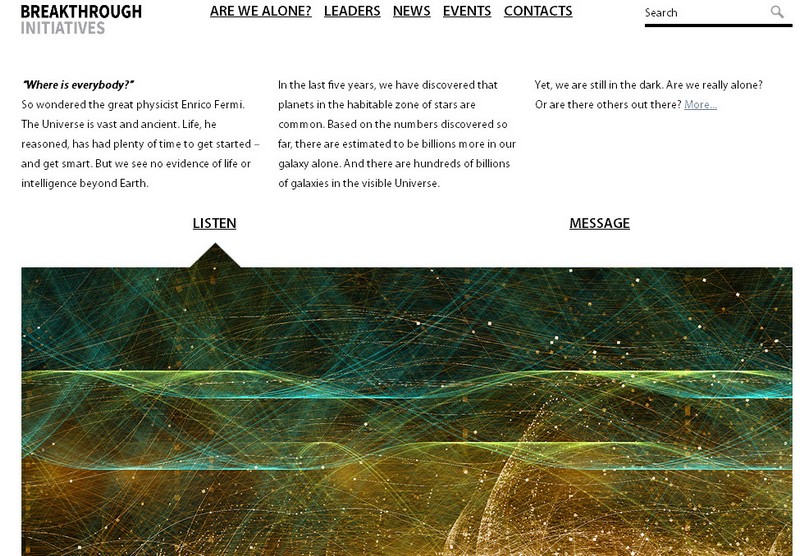Breakthrough Initiatives: More Funds and Support in the Search for Alien Life
How much would it take to find other life forms in the universe? Apparently, it’s at the vicinity of around $100 million (at least for the initial endeavors). Illustrious physicist Stephen Hawking and Russian venture capitalist Yuri Milner were all over the news recently for their renewed push for the search for an initiative to find alien life in space.
Back in 2013, the intention to discover extraterrestrial life was already made clear by the United States House Science Committee as it concluded, after a hearing aimed at collecting information on the state of astrobiology, that it was only a matter of time until life on other planets is discovered. Professor Sara Seager of the Massachusetts Institute of Technology testified in the hearing and said that humanity is on a great threshold in the history of space exploration and that there exists a great possibility of finally identifying Earth-like exoplanets which can be inhabited.
$100 Million Initiative
Hawking and Milner announced a program that will bring the search for alien life into a higher level. Called “Breakthrough Initiatives,” this $100 million program will be funded by Milner and will will make use of advanced computer power in ways never before seen to search for life beyond the solar system.
Breakthrough Initiatives involves the pooling in of financial, computing, technological, and mental resources from millions of people worldwide. It will also make use of some of the world’s largest radio telescope, manned by scientists chosen by Milner, to undertake a ten-year search for radio signals that could provide hints of existence of intelligent life in other parts of the universe.
In an interview with Al Jazeera, Milner said that the endeavor will be the biggest ever search for alien life. It is expected to generate tremendous amounts of data. A day’s work under “Breakthrough Initiatives,” according to Milner, may already generate amounts of data equivalent to what used to take a year to obtain under previous efforts.
Significantly Bigger Endeavor
Scientists involved in the project agree that this new project is overwhelmingly bigger than anything done before. At present, the most prominent similar effort is called SETI or the Search for Extra Terrestrial Intelligence. Its estimated funding is less $2 million per year according to astrophysicist Dan Werthimer, director of the SETI project. Werthimer now serves as an adviser to Milner for the Breakthrough Initiatives project.
With $100 million and new technologies, current efforts to find alien life are bound to generate more and faster results compared to how things were in the early 1990’s, the last time when SETI received significant funding. Considering how technology has improved, from faster computing power to dozens of times of improved telescope sensitivity, the project will be able to monitor billions of radio frequencies at a time and explore areas 10 times wider.
One of the most important uses of the increased funding under the Breakthrough Initiatives project is the rental for telescope time. Part of the plan is to book times at various radio telescopes including the Radio Astronomy Observatory in West Virginia and the Parkes Observatory in New South Wales, Australia. Milner says that they will be booking two months at different observatories – a significant time increase from the usual two days under SETI and other similar efforts.
Planned Activities
The Breakthrough Initiatives team will be also include the critical participation of renowned scientists like former NASA Ames Research Center Director Peter Worden to organize the signals compiled, examine patterns, and present the data to the public. What this new search for alien life will be focusing on is the identification of whether the signals detected are created by intelligent life or just natural phenomena. The project will not try to learn about alien civilizations but at the very least will try to find signals that can prove that there exists intelligent life beyond what current science and technology know.
Searching for Aliens Despite Fear of ‘Colonization’
Stephen Hawking once revealed that he worries that aliens may invade Earth and that attempts to find them may just lead them to the planet. However, he is lending his support to the efforts in finding alien life without necessarily taking back his fear of advanced civilizations taking over Earthlings. At the Breakthrough Initiatives announcement, he reiterated that things haven’t gone well for the inferior civilizations when they encountered superior ones. However, be believes that the initiative to find intelligent life in space is of “special importance in a moment when humanity’s achievements in space are in the spotlight.”


